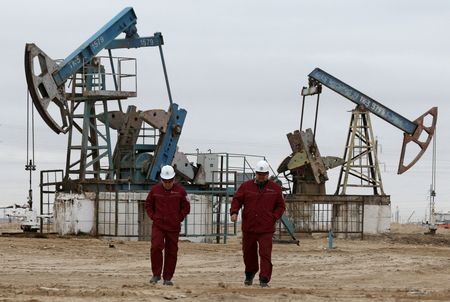
By Shadia Nasralla
(Reuters) – Oil was broadly steady on Wednesday after Russia cut gas supplies to Bulgaria and Poland, while lingering concerns about Asian coronavirus lockdowns weighing on economic growth and oil demand kept a lid on prices.
Having dipped into negative territory, Brent crude futures rose 53 cents, or 0.5%, to $105.52 a barrel by 1024 GMT. U.S. West Texas Intermediate crude futures gained 60 cents, or 0.6%, to reach $102.30 a barrel.
Russian energy giant Gazprom said on Wednesday it halted gas supplies to Bulgaria and Poland in a major escalation of Russia’s broader row with the West over Ukraine.
While crude prices on Wednesday did not jump, the row sent NYMEX ultra-low-sulfur diesel futures up more than 9% on Tuesday to $4.47 a gallon, a record close.
U.S. government data on oil inventories is due later on Wednesday. [EIA/S] Industry data on Tuesday showed U.S. crude and distillate stocks rose last week, while gasoline inventories fell. [API/S]
Also capping oil price gains, the dollar rose to its highest in two years on Wednesday, making oil purchases more expensive for holders of other currencies. [FRX/]
“A U.S. crude build last week and still solid Russian crude exports is limiting the upside for crude,” said UBS commodity analyst Giovanni Stauvono.
“This in a risk off environment with a stronger U.S. dollar and mobility restrictions in the second largest oil consumer China.”
The International Monetary Fund (IMF) warned that Asia faced a “stagflationary” outlook with the Ukraine war, a spike in commodity costs and a slowdown in China.
Still, China’s domestic flight demand has rebounded, travel data firm OAG said.
China’s central bank said on Tuesday it would step up monetary policy support as Beijing races to stamp out a nascent COVID-19 outbreak in the capital and avert the same type of debilitating city-wide lockdown Shanghai has been under for a month. Any stimulus would boost oil demand.
(Additional reporting by Florence Tan in Singapore; editing by David Evans)

